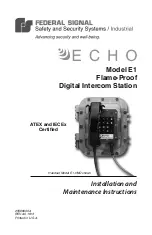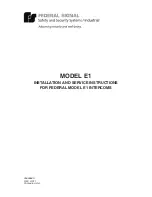
Appendix C
Programming Console Operations
337
System Operations
The following table lists the Programming Console operations according to their function. A brief description of
each operation is given, along with the allowable modes in which it can be implemented, and the keystroke
sequence used to enter it.
Operation/Description
Modes*
Key sequence
Password Input
Controls access to the PC’s
programming functions. To gain
access to the system once
“PASSWORD” has been displayed,
press CLR, MONTR, and then CLR.
R M P
CLR
MONTR
CLR
Buzzer ON/OFF
The buzzer can be switched to
operate whenever Programming
Console keys are pressed (as well as
for the normal error indication). BZ is
displayed in the upper right corner
when the buzzer is operative. The
buzzer can be enabled by pressing
SHIFT and then 1 immediately after
entering the password, or after
changing the mode.
R M P
SHIFT
B
1
Data Clear
Unless otherwise specified, this
operation will clear all erasable
memory in Program Memory and IR,
HR, AR, DM, and TC areas. To clear
EPROM memory the write enable
switch must be ON (i.e., enabled).
The branch lines shown are used
only when performing a partial
memory clear, with each of the
memory areas entered being
retained. Specifying an address will
result in the Program Memory after
and including that address being
deleted. All memory up to that
address will be retained.
P
CLR
PLAY
SET
NOT
REC
RESET
MONTR
HR
CNT
DM
[Address]
Partial
Clear
Retained if
pressed
All Clear
I/O Table Register
Whenever I/O Unit changes are
made that affect the operation of the
system, the I/O table needs to be
corrected to reflect the changes. This
includes the initial registration once
the system has been established.
P
CLR
FUN
SHIFT
*
CH
CHG
9
7
B
1
D
3
WRITE
I/O Table Change
Allows I/O Units to be removed or
added without the need to re-register
the I/O Table or to amend the user
program. By creating dummy entries,
word address discrepancies can be
avoided when the Units are added
later.
P
CHG
A
0
B
1
D
3
WRITE
I/O Table Read
in progress
I/O types
0:
Output
1:
Input
3:
Word
Word Multiplier Enter
If the system has Remote I/O
Masters connected to I/O Link Units,
Optical I/O Units, or Remote
Terminals, a word multiplier must be
assigned to each Master after the I/O
table is registered. Word multipliers
can take values from 0 to 3.
P
WRITE
I/O Table Register completed
[Word multiplier]
*Modes in which the given instruction is applicable: R = RUN, M = MONITOR, P = PROGRAM
















































